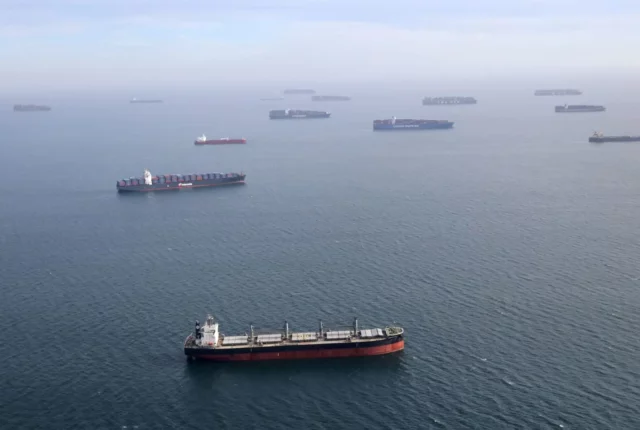
Container Shipping Prices Skyrocket as Rush to Move Goods Picks Up
Prices to ship containers from Asia to the U.S. and Europe are rising at a historic pace as cargo owners bid up rates in a search for sea freight transportation capacity that shipping industry executives expect to remain tight for the rest of the year.
The average price world-wide to ship a 40-foot container has more than quadrupled from a year ago, to $8,399 as of July 1, according to a global pricing index by London-based Drewry Shipping Consultants Ltd. The measure has surged 53.5% since the first week of May.
Listed prices to ship from China to major ports in Europe and the U.S. West Coast are closer to $12,000 a container, by Drewry’s measure, and some companies say they are being charged $20,000 for last-minute agreements to get goods onto outbound vessels.
Commercial shipping experts say the rising ocean rates are the result of disruptions across supply chains that triggered delays at ports and inland distribution networks as Western retailers and manufacturers rush to restock inventories that were depleted during the Covid-19 pandemic.
The rates started edging upward last summer as consumer demand began rising with the end of lockdowns.
The pricing surge has accelerated as events including the Suez Canal blockage in March and bottlenecks at gateways in Southern California and China’s Yantian port have tied up ships at sea for days and weeks at a time, with the backups rippling across supply chains and leaving containers in short supply.
Denmark-based shipping research group Sea-Intelligence ApS said a “staggering” 695 ships were more than a week late in arrivals at U.S. West Coast ports in the first five months of 2021. That compares with 1,535 such late arrivals during the entire period from 2012 to 2020, the group said.
“Everyone is spending much longer on round trips,” said Philip Damas, head of the Supply Chain Advisors practice at Drewry. “Containers are sitting on the water for much longer periods of time, containers are waiting at ports for much longer. Productivity in container shipping is deteriorating. Every failure is effectively creating ripple effects. It’s a vicious cycle.”
Mr. Damas said rate quotations for growing numbers of shipments are surpassing measures such as the Drewry index, the Shanghai Containerized Freight Index and the Freightos Baltic Index because the indexes generally capture spot booking prices that are being offered within about a week before a ship’s scheduled departure. With cargo owners scrambling to get goods moving, some ocean carriers are offering slots on ships past that point, when ships are at terminals and customers are pressing to get goods on board.
“Now everything is overbooked,” he said. “Shippers are desperate to book tomorrow. It’s more a bidding war than it is a traditional tariff and this bidding war is accelerating. Some of these $23,000, $24,000 prices include the inland distribution cost and that can easily add far more to the final cost.”
Supply-chain experts say the high rates leave many shippers, particularly those with relatively low-value goods, facing a choice: They can pay the prices and try to pass the costs on to their customers or retreat from overseas markets.
Shipping personal effects has become more expensive than ever as both Shipping by Air and Sea have drastically increased making moving countries more difficult than it already is.
Sea freight services to Australia have never been so challenging, let Across the Ocean Shipping keep your supply chain moving by dropping us a line today.
+61 39427 0015






